When I was around 11 or 12 years old, my family traveled to Jalisco for a quinceañera. We began the trip in the city of Guadalajara where I hung out with cousins I was meeting for the first time, and we engaged in a sort of cross-cultural exchange. I answered their questions about American TV and customs, and translated the lyrics to Marilyn Manson’s “The Beautiful People” at their request. In return, they showed me how to get around the city, took me to my first real Posada, and introduced me to Jaliscan delights like tortas ahogadas. Knowing that we’d soon be making the long, windy trip to the tiny rural towns that were our final destination, they also made sure to warn me about La Llorona.
La Llorona is a figure from Mexican folklore, the ghost of a grieving mother condemned to wander the earth after drowning her children for reasons that vary with each version of the tale. She is said to appear near riverbanks and other bodies of water, and woe is you if she finds you. At best, she’ll scare the crap out of you. At worst, it’s adios y buenas noches. Like many urban legends, the story is often used to keep kids in line. “Don’t wander off or La Llorona will take you!”—that sort of thing.
Ol’ weepy face never did appear on that trip and when we got back to the states, I immediately tried to find books about her but sadly struck out. The texts I found were largely academic and not what my young brain was looking for. I basically wanted Goosebumps for Mexicans, and that just didn’t exist.
As an adult, it’s been a real treat to finally see books exploring Latin American folklore get published, from La Llorona and El Cucuy to La Ciguapa and El Silbón. These stories are ripe for exploration, perfect creepy blends of frightening figures and cautionary tales. I’ve rounded up some of the best horror inspired by Latin American folklore, from middle grade and adult takes on La Llorona to a YA anthology of monster stories from all over Latin America. Having said that, this list weighs heavy on Mexican folklore, but not because I wanted it to. I love my people down, but I wish there were more books out there exploring the monsties from other countries and cultures. The anthology I have for you is a great place to start, but we need more where that came from.
So go ahead and get your creep on. And if you see a weeping woman in white… run.
La Llorona
Translating to the Weeping Woman or Wailing Woman, La LLorona is a ghost from Mexican folklore (and other parts of Latin America). She is said to have drowned her children in life and now roams the earth sobbing mournfully, luring adults and children alike to their death.
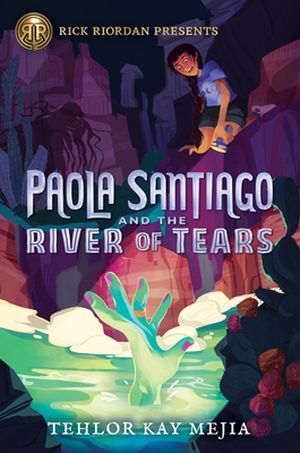 Paola Santiago and the River of Tears by Tehlor Kay MejiaThis middle grade ghost story and adventure novel from the Rick Riordan Presents imprint is the first in a duology about Paola Santiago, a space-obsessed 12-year-old who’s itching to test out her new telescope. The best stargazing spot in town is near the Gila, the river she and her schoolmates have been warned to stay away from after a girl drowned there a year ago, and that Paola has avoided for much longer thanks to her mother’s fear of La Llorona. Ashamed of these superstitions and doubtful that this weeping woman really exists, Paola sneaks out with her two best friends and heads to the spot by the river. Instead of seeing stars, they encounter the stuff of legends…and nightmares. |
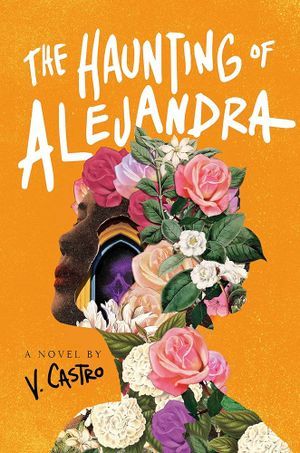 The Haunting of Alejandra by V. CastroAlejandra is a wife, mother, and daughter to her adoptive mother, but feels disconnected from any sense of self. She’s also hiding a dark secret: in her lowest moments, she hears voices and sees the ghostly apparition of a weeping woman in white. She begins seeing a therapist who encourages her to explore her family history, beginning with the biological mother she never met. That’s how she learns that the women in her family have been haunted by these same visions for generations, and that she possesses the ancestral strength to banish this woman for good. |
River Woman, River Demon by Jennifer GivhanEvangelina Santos Moon in a Chicana artist, bruja, and curandera whose husband was just arrested for the murder of a dear friend. Eva finds evidence of infidelity that seems undeniable, but at odds with everything about the beloved professor and community pillar she loves. Eva is also experiencing blackouts, with sporadic recollections that suggest she may have played a role in Eva’s death. She soon finds herself a suspect, and another tragic death from her past comes back to haunt her. This book doesn’t ever name La Llorona directly if my memory serves me right, but the connection to the legend is clear, and Jennifer Givhan revealed in an interview with The Adroit Journal that La Llorona makes her way into pretty much everything she writes. She has approached La Llorona’s story with reverence and a sense of reclamation, encouraging us to examine the context around La Llorona’s mythology and what it reveals more about the way we treat women and mothers. Read it, it’s so good! |
El Cuco/Cucuy
El Cuco is basically the boogeyman of Latin America, also known as El Coco, El Cucuy, El Cucu, and several other combinations of the letter “c” and a vowel, depending on one’s country of origin. I knew him as El Cucuy growing up, but was never really given more details beyond “he is scary and he will kidnap you if you’re bad.” I’ve seen some more definitive descriptions citing glowing red eyes, sharp teeth, and sharper claws. For me, it was mostly terror and vibes.
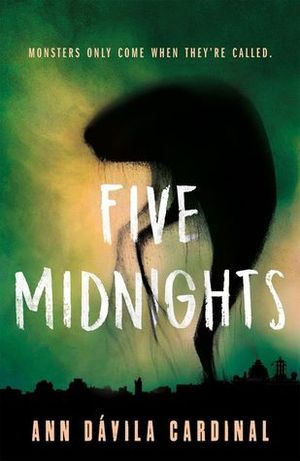 Five Midnights by Ann Davila CardinalThis work of YA horror is also part of a duology and takes place in Puerto Rico, where a string of suspicious deaths among a group of friends has the island feeling uneasy. Teen Lupe Dávila is visiting for the summer and gets roped in by a boy named Javier to investigate the killings of these young men. Do they like each other? Not one bit. But they’re working it out as they chase down clues. Everything points to a supernatural—and chilling—explanation that can’t possibly be true… can it? For all my reggaeton fans, I will never pass up an opportunity to share that there’s a character named “Papi Gringo” in this book that’s a clear reference to Daddy Yankee. That detail just tickles me. |
Vampiros
You might think vampire legend is mostly a European thing, pero al contrario! Latin America has its own vampiric folklore. There’s the Patasola from Colombia, the Chupcabra from Mexico, and the Piuchén from Mapuche mythology in Chile, to name a few. Sadly, I couldn’t find standalone books dedicated to these legends, but I do have good news: these two vampire reads below are fantastic, and I have a book further down that combines lots of folklore in one book.
Vampires of El Norte by Isabel CańasConfession: I cannot for the life of me remember the actual name of this book, referring to it every time as “Vampiros del Norte.” I apparently really want the book to be the name of a banda norteña!? But I digress. In 1840s Mexico, Nena knows the Anglo settlers from the north aren’t the only monsters threatening her home. She knows this because a very different kind of monster attacked her nine years ago, and she barely escaped with her life. All this time, her childhood sweetheart Nestor has believed she was dead. But when the US invades Mexico in 1846, Nestor and Nena meet again in a shocking but brief reunion. They’ll have to put their painful pasts behind them if they’re going to survive the night, because the war they’re facing is like no other. |
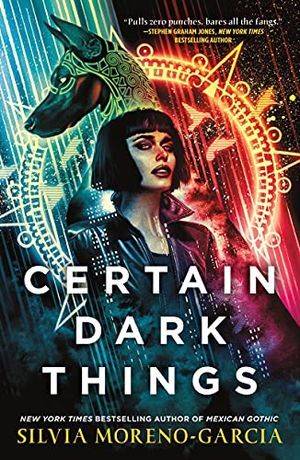 Certain Dark Things by Silvia Moreno-GarciaA street kid named Domingo is just trying to get by when he meets the vampire Atl, a smart, seductive descendant of Aztec blood drinkers on the run from a narco-vampire clan. There’s so much to love here: the urban fantasy setting, Aztec mythology, rival gangs in modern CDMX, a world-weary, hardened female protagonist with a scrappy young sidekick, and various species of vampire. This is one of my favorite Silvia Moreno-Garcia reads, and that is saying something. |
Multiple Nightmares for the Price of One
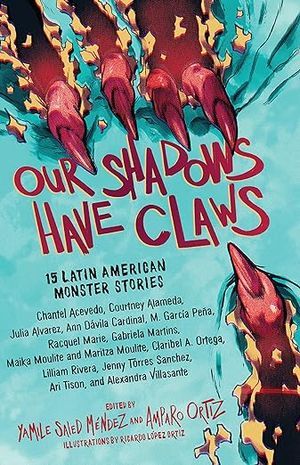 Our Shadows Have Claws edited by Yamile Saied Méndez and Amparo Ortiz, illustrated by Ricardo López OrtizThis is a fantastic collection of monster tales set across Latin America and the diaspora. The creatures featured here range from vampires and zombies to shape-shifters and cannibals, pulling from all sorts of Latin American legends and folklore for these creepy little bite-sized frights. There’s a story about star-crossed lovers from feuding families where the young woman is from a monster-hunting family and her secret boyfriend is (you guessed it) the monster. Another story features a queer girl whose coming out takes a deadly turn when her boyfriend’s aggressive behavior summons a blood-soaked Colombian spirit. The contributors to this collection include Julia Alvarez, Ann Dávila Cardinal, Lilliam Rivera, Maika and Maritza Moulite, and many more amazing talents. If you’re craving a blood-curdling read with a side of Latin American folklore, this will give you many scares for the price of one. |
Lotería by Cynthia PelayoIf you’ve never played loteria, it’s a Mexican game a lot like bingo. Every player is given a card with several images in a grid, and one person pulls cards from a deck and calls out the items in those images. If you have the image they call out on your card, you place a token on that square (my family uses dry pinto beans because we fancy). The goal is to fill a line or the entire card, depending on how you play. In Cynthia Pelayo’s hands, each of the images—which include everything from animals and produce to musical instruments and people—is the inspiration for a different story based on Latin American myth, folklore, urban legend, or superstition. It’s horror, it’s paranormal, it’s speculative, it’s weird and scary and great. You’d think the diablo (devil) card would be the scariest, but even the sirena card (mermaid) is deeply unsettling. |
For more folklore of the frightful and non-frightful variety, check out this roundup of folklore books from around the world. If horror is your preferred reading flavor, here’s an introduction to the recent boom in Latin American horror.



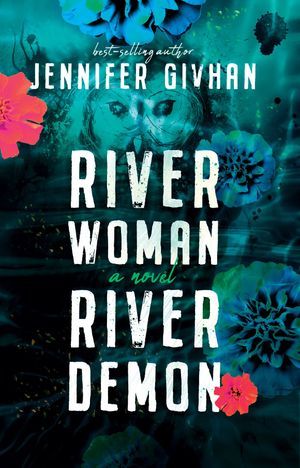
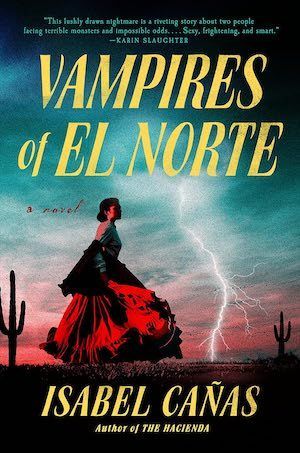
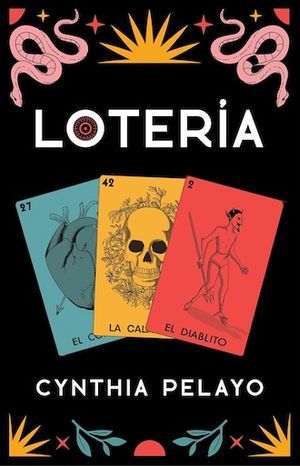
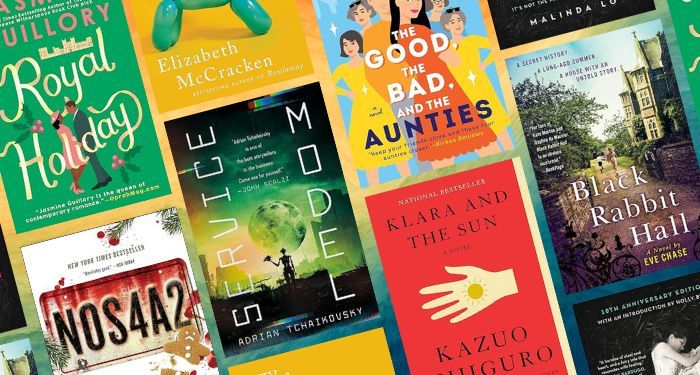


.jpg.webp?itok=1zl_MpKg)





 Bengali (Bangladesh) ·
Bengali (Bangladesh) ·  English (United States) ·
English (United States) ·